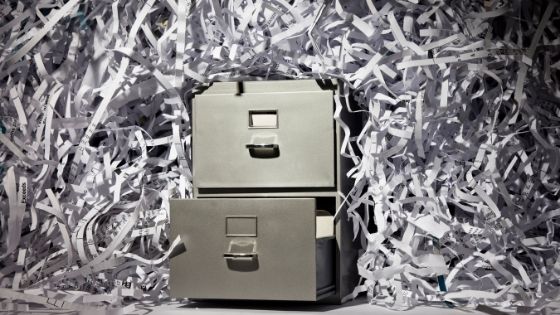We often keep loads of digital files on our computers, such as photos, documents, spreadsheets, music, videos, and others. At some point in time, you may no longer need other files and want to discard them. However, these files may contain sensitive information that you do not want other people to have access to, so they must be permanently deleted to cease their existence.


While others think that deleting the files and emptying the recycle bin will do the trick, the computer usually retains the data in the hard drive that can still be restored. Therefore, to make sure that the data is gone for good, the option of file shredding can provide a lasting solution. Everyone can benefit from shredding all their unwanted digital files and documents. Read on to learn what file shredding is and how it works.
What is File Shredding?
File shredding is a process that involves the use of a digital shredder or software to permanently delete files from your computer system when you no longer need them. The process is also called wiping, and it involves overwriting the space that was once occupied by the deleted file. This is done to maximize storage inside the computer
The Significance of a File Shredder
Simple deletion of unwanted digital files from your computer system does not mean that the information is destroyed and gone forever. You should use a file shredder to make sure that you removed the files you don’t need for good. There are many advantages of shredding or permanently deleting digital files from your computer system, such as protecting individuals from cases of identity theft and helping businesses safeguard their intellectual property.
How File Shredding works
A file shredder works by first overwriting the file before performing the actual delete. This process involves overwriting the files with values of zeros to make the content unreadable. Just like in shredding a physical paper, it is making the document useless and not easy to repair. Digital shredding also produces the same effect, and it makes the data stored on your hard drive unreadable. Multiple software solutions can help you remove data permanently from your hard drive. However, you need to find the right file shredder to avoid the risks of losing your entire data.
File Shredding Tips
The following are some shredding tips that you can utilize:
- Get rid of temporary files like cookies, internet cache, logs, and files in your recycle bin
- Shred your free space on the hard drive
- Shred your swap file or consider not using it
- Use a temporary partition
- Shred files regularly, but you should not overdo it since it can cause wear and tear to your hard drive.
You must also choose a safe and reliable shredding program that will not pose threats to your data, like identity theft, especially after thinking that you have permanently deleted your files.


If you no longer need some files from your computer system, shredding can help you permanently delete the files so that they become unrecoverable. When you delete and empty your recycle bin, the hard drive will still retain the files. Their location is only changed, but the data can be restored and recovered using different tools. Shredding works by overwriting the spaces previously occupied by the file that you have permanently destroyed.
















